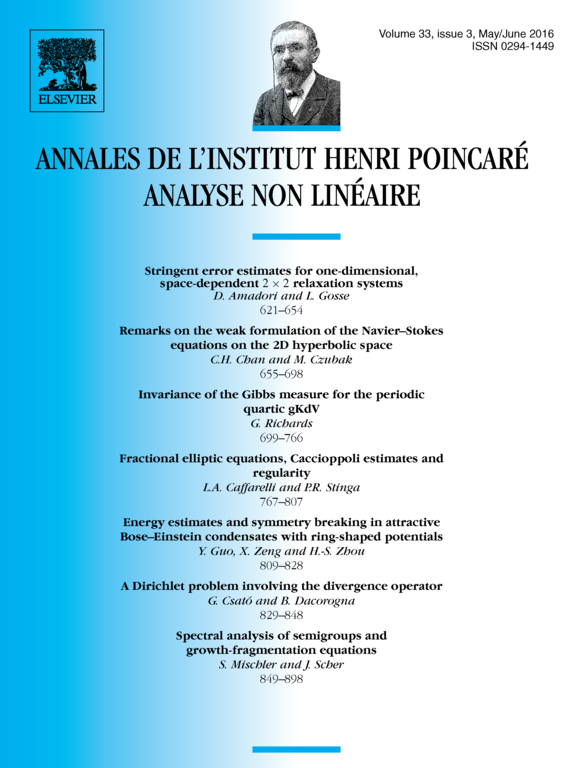Stringent error estimates for one-dimensional, space-dependent 2 × 2 relaxation systems
Debora Amadori
DISIM, Università degli Studi dell'Aquila, L'Aquila, ItalyLaurent Gosse
IAC–CNR “Mauro Picone” (sezione di Roma), Via dei Taurini, 19, 00185 Rome, Italy

Abstract
Sharp and local a posteriori error estimates are established for so-called “well-balanced” BV (hence possibly discontinuous) numerical approximations of space-dependent Jin–Xin relaxation systems under sub-characteristic condition. According to the strength of the relaxation process, one can distinguish between two complementary regimes: 1) a weak relaxation, where local errors are shown to be of first order in Δx and uniform in time, 2) a strong relaxation, where numerical solutions are kept close to entropy solutions of the reduced scalar conservation law, and for which Kuznetsov's theory indicates a behavior of the error in . The uniformly first-order accuracy in weak relaxation regime is obtained by carefully studying interaction patterns and building up a seemingly original variant of Bressan–Liu–Yang's functional, able to handle BV solutions of arbitrary size for these particular inhomogeneous systems. The complementary estimate in strong relaxation regime is proven by means of a suitable extension of methods based on entropy dissipation for space-dependent problems. Preliminary numerical illustrations are provided.
Highlights
-
-stability of systems involving a space-varying coefficient is studied by means of an original Bressan–Liu–Yang nonlinear functional, decreasing even for “big BV data”.
-
For weak relaxation, first-order, uniform in time, rigorous error estimates are proved for discontinuous solutions.
-
For strong relaxation, a complementary, linear in time, half-order Kuznetsov-type estimate is established.
-
Practical algorithmic consequences of these results are discussed.
Cite this article
Debora Amadori, Laurent Gosse, Stringent error estimates for one-dimensional, space-dependent 2 × 2 relaxation systems. Ann. Inst. H. Poincaré Anal. Non Linéaire 33 (2016), no. 3, pp. 621–654
DOI 10.1016/J.ANIHPC.2015.01.001